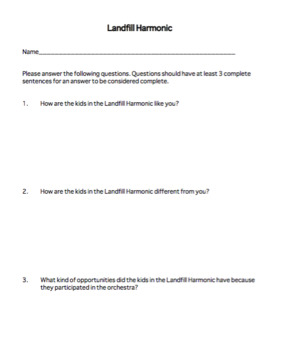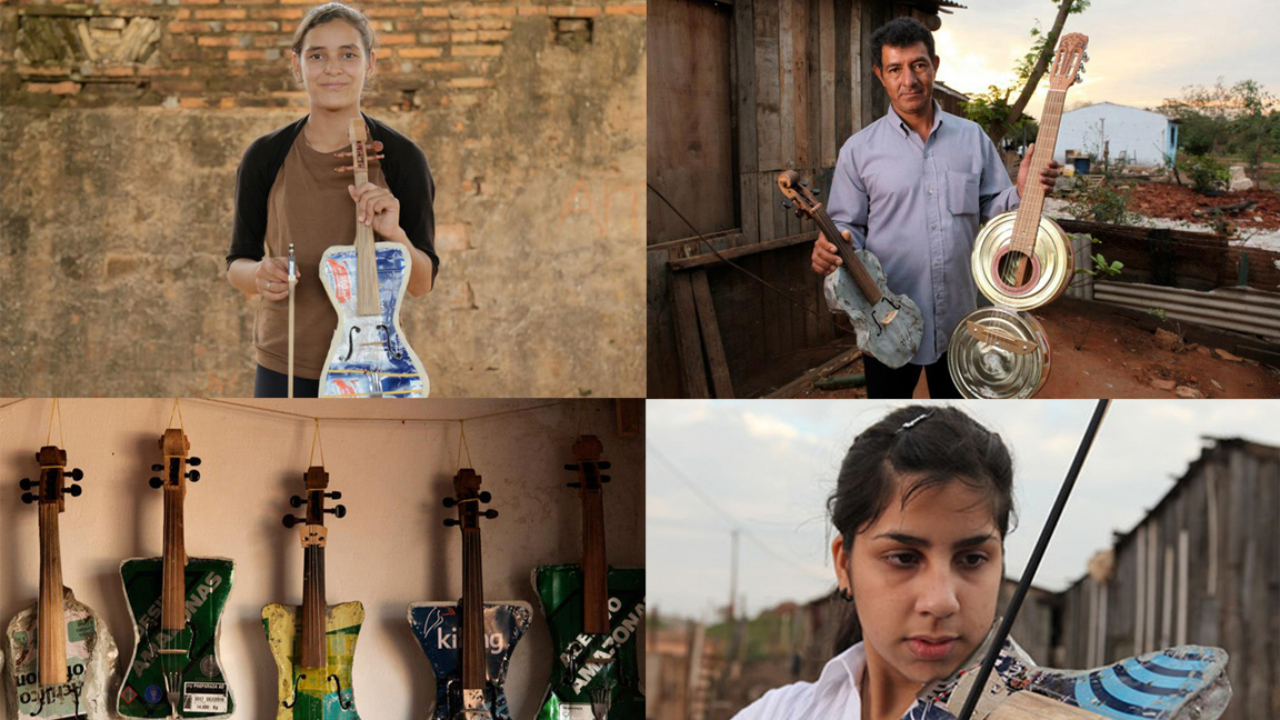

Landfill Harmonic (2015) Directed by Brad Allgood. We can hope now that being in the orchestra has given the players the tools and the vision to move beyond the limitations of where they are from. The transformative power of music broke through and changed life here. He made hope for people who must feel as thrown away as the stuff they pore through each day.Īs (North) Americans, the poverty of a place like Cateura is beyond comprehension. He found treasure where there was only trash. Favio literally lifted the kids of Cateura out of the garbage and into the sky to see not only the world outside but the world of possibilities for their future that it must be so very hard to see when your horizon is made of filth. The unlikely success of this astonishing musical event brings cultural achievement to children who would probably have never seen anything of the sort. What struck me was the casual acceptance of the harshness of life by people who actually have a title for those who forage in a landfill like it’s their job because it is their job: “Gancheros” and how hopeless it would feel to aspire to anything more. You can mine the interwebs for all the details there are many pages written and many videos to take in (including the documentary itself). “The unlikely success of this astonishing musical event brings cultural achievement to children who would probably have never seen anything of the sort.” Eventually the waters rolled back and Favio, along with Nicholas and the orchestra, got to work re-settling his players and leveraging the influence he’d built through the orchestra to get help for the town. As if living at the landfill wasn’t already disaster enough, they had floods to compound the difficulty of that life.įavio worked tirelessly after the flood to find new homes for the players in his orchestra. Many had to make their way to the higher ground of the landfill proper. In June of 2014, Cateura was devastated as massive floods swept through and damaged the flimsy homes, extensively displacing the people that had lived there. Of course it has also changed the lives of the members of the orchestra. In this case however the ends justify: the existence of the orchestra and this film does bring awareness to the horrific conditions there and has encouraged people to help them. To some extent the way the orchestra is presented comes across perhaps a bit exploitative they are trotted out as show pieces to marvel at. The orchestra played with their favorite metal band Megadeth. There have been 60 Minutes segments and Ted talks. In the years since then, they’ve performed around the world. We follow the creator of the orchestra Favio Chavez and his instrument builder Nicholas Gomez as they build instruments for the kids, teach them to play in a music school run by Favio, and subsequently become internet viral famous. The Orquesta de Instrumentos Reciclados de Cateura plays instruments that are made of recycled materials from the landfill. That’s 3.5 Billion souls, BT dubs, in case you were wondering whether the current economic, social, and political model of the world can be described as equitable and sustainable.


This seems a good moment to mention that a 2014 Oxfam report calculates that the richest 85 people on Earth control as much wealth as half of the people on the planet. That’s not unique to Cateura, but to (North) American sensibilities it’s shocking. They make a living off the 1500 daily tons of basura from the city of Asuncion. Firstly the town they live in is a landfill slum that is the source of goods they scavenge and sell to provide income. The phrase “first world problems” has been overused but keep it top of mind as you watch the musicians of Cateura solve some decidedly not first world problems. As North Americans you should know that the story of The Recycled Orchestra from Cateura, Paraguay in the documentary Landfill Harmonic will f*****g break you.


 0 kommentar(er)
0 kommentar(er)
